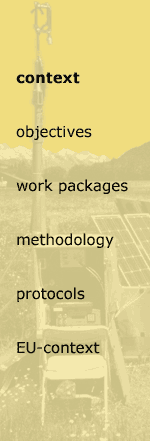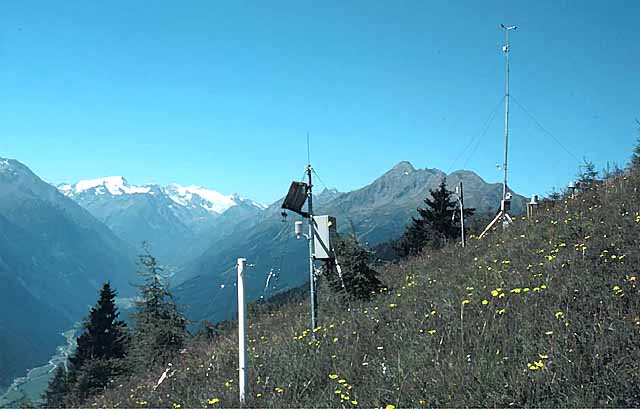

General context
Mountain regions are important sources of water, centres of biodiversity, and an economic focus with respect to tourism, but they also represent areas that are highly sensitive to human and climate impacts. Ongoing socio-economic changes have strongly influenced land use in mountain areas: In the Southern mountain  regions of Europe, pastures, in the past degraded by a combination of overgrazing and summer water shortage, are currently recovering after grazing pressure has decreased. In the subarctic tundra a recent increase in reindeer stock has enhanced grazing pressure. In the Alps, a rapidly increasing part of formerly managed grassland (meadows and pastures) has been abandoned during the last decades, and is re-colonised by shrub and tree species. In the mountain areas of the Newly Associated States (NAS) of the EU, large areas have been abandoned fairly recently after re-privatisation of land. These transformations actuate fundamental alterations of landscape pattern and ecosystem structure and function, affecting the spatial structure of plant canopies, species composition and physiology, nutrient availability and in consequence the biosphere-atmosphere CO2 exchange, which in turn may feed back on the atmospheric CO2 concentrations.
regions of Europe, pastures, in the past degraded by a combination of overgrazing and summer water shortage, are currently recovering after grazing pressure has decreased. In the subarctic tundra a recent increase in reindeer stock has enhanced grazing pressure. In the Alps, a rapidly increasing part of formerly managed grassland (meadows and pastures) has been abandoned during the last decades, and is re-colonised by shrub and tree species. In the mountain areas of the Newly Associated States (NAS) of the EU, large areas have been abandoned fairly recently after re-privatisation of land. These transformations actuate fundamental alterations of landscape pattern and ecosystem structure and function, affecting the spatial structure of plant canopies, species composition and physiology, nutrient availability and in consequence the biosphere-atmosphere CO2 exchange, which in turn may feed back on the atmospheric CO2 concentrations.
However, there is still considerable lack of data on the carbon cycling of non-forest mountain ecosystems in the NAS, in particular with regard to the effects of changes in land use in context with their current and projected socio-economic development.
